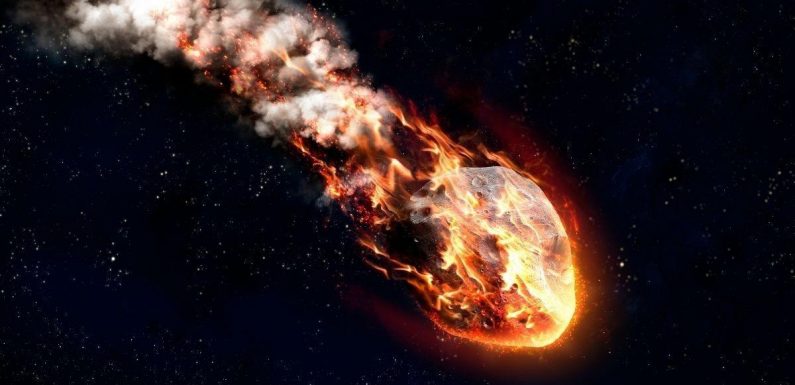
Meteor spotted in night sky over Northern Ireland
We use your sign-up to provide content in ways you’ve consented to and to improve our understanding of you. This may include adverts from us and 3rd parties based on our understanding. You can unsubscribe at any time. More info
According to the space agency, more than 30 eyewitnesses in the neighbouring states of Arkansas, Louisiana and Mississippi reported seeing a “bright fireball” at 8:03 am local time. These were followed by numerous accounts of loud booms, primarily in Claiborne County, Mississippi, but also in adjacent areas. But some 22,000 miles up in Earth orbit, the “Geostationary Lightning Mapper” detectors onboard the US National Oceans and Atmospheric Administration (NOAA)’s Geostationary Operational Environmental Satellites (GOES) 16 and 17 had also caught sight of the meteor.
The craft detected several bright flashes believed to have been caused by the “bolide” breaking up.
Bolide is the name given to large meteors that explode in the atmosphere.
This week’s blazing fireball, NASA said, was first spotted some 54 miles about the Mississippi River near the town of Alcorn in the west of Mississippi state.
Astronomer Dr Bill Cooke of NASA’s Meteoroid Environments Office at the Marshall Space Flight Center in Huntsville, Alabama, said: “This is one of the nicer events I have seen in the Geostationary Lightning Mapper data.”


According to NASA, the meteor — once part of an asteroid — started with a size of around one foot in diameter and had a weight of around 90 lbs.
As it whizzed southwest over the US, however, air resistance caused the rock to break up into various pieces.
The meteor finally disintegrated around 34 miles above the swamps north of the community of Minorca, Louisiana.
According to the space agency, the fragmentation of the space rock released the equivalent of three tonnes of the explosive trinitrotoluene (TNT).


It was these explosions, NASA explained, which created the shockwaves which people heard as loud booms and felt as vibrations in the local area.
At its peak, however, the fireball was more than ten times brighter than the Full Moon.
Dr Cooke added: “What struck me as unusual was how few eyewitness reports we had given the skies were so clear.
“More people heard it than saw it.”
DON’T MISS:
NASA’s Mars helicopter spots ‘otherworldly’ wreckage on Red Planet [ANALYSIS]
Poland outsmarts Putin as Kremlin CUTS gas supplies into EU [INSIGHT]
Macron faces €1.4bn bill as 27 nuclear reactors down [REPORT]

This part of the US is no stranger to fireballs — in fact, Alabama is where the first confirmed case of an individual being struck by a meteorite took place.
A grapefruit-sized chunk of space rock broke from a meteor over the skies of Sylacauga on November 30, 1954, and slammed through the roof of a farmhouse.
Ricocheting off of a console radio, the meteorite slammed into the side of one Ann Elizabeth Hodges as she took a nap on her couch — leaving the unfortunate woman poorly bruised.
Following her unexpected ordeal, Mrs Hodges found fame, having reportedly been accosted by some 200 reporters outside of her home shortly after the incident.
Source: Read Full Article